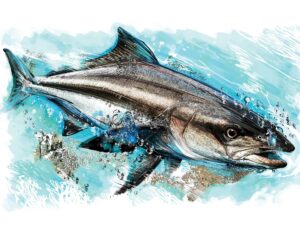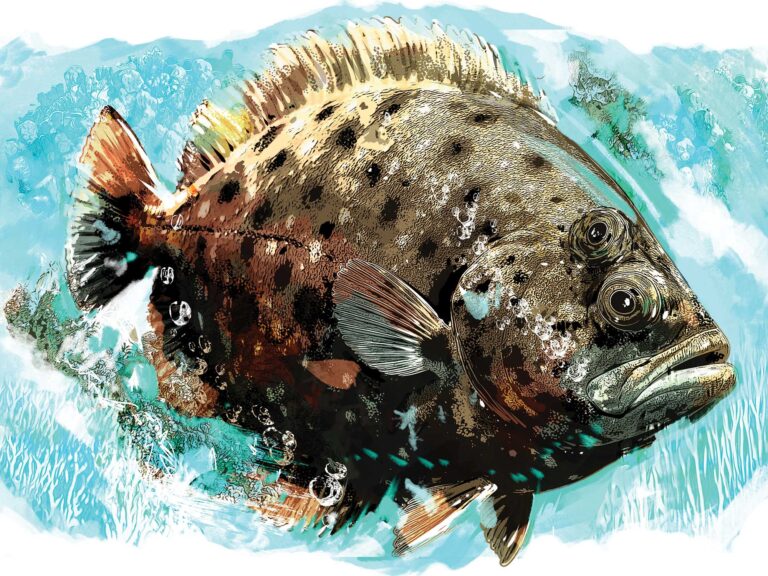A Mackerel or a Tuna?

Question: I read about an all-tackle record catch of a species called the butterfly kingfish. The 91-pounder was caught off Australia on a trolled Rapala lure. This was the first I’ve ever seen of this totally bizarre-looking fish, and I’d love to know more — what it’s related to (the back look looks like a mackerel or tuna, but not the front!), where it’s found, and what are its habitat/food, maximum size and commercial/food value. — Kari Sherman, Anchorage, Alaska
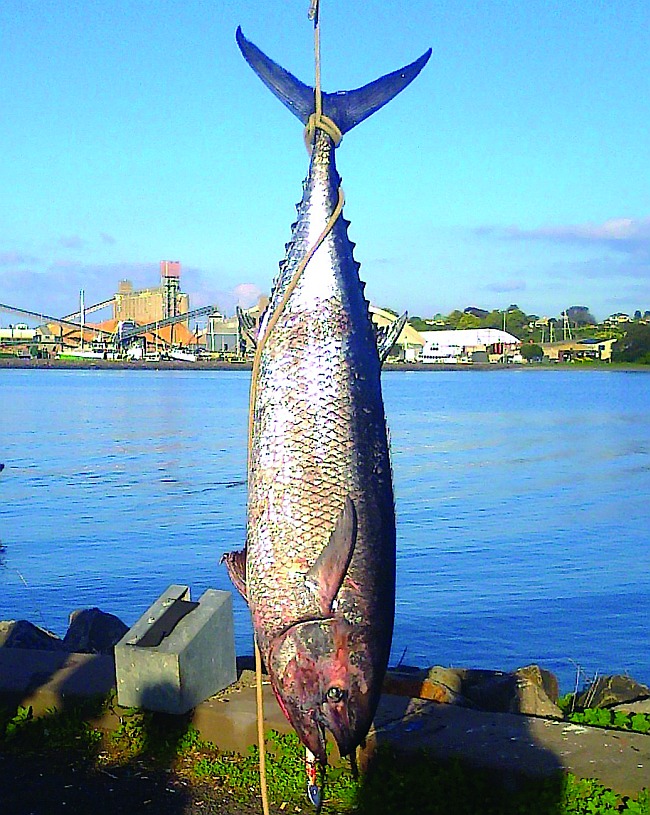
Answer: Good question Kari — it’s a butterfly kingfish (Gasterochisma melampus), a species rarely encountered by anglers but more commonly by commercial longliners targeting southern (Pacific) bluefin tuna and swordfish. This species is mainly found in deeper oceanic waters of the southern ocean where surface-water temperatures range from 46 to 54 degrees F, though occasionally isolated specimens are encountered in the north Pacific.
One notably large specimen of nearly 6 feet and 135 pounds was taken 400 miles north of Hawaii on a longline set overnight at 100 feet depth. It took a bait of squid, but stomach-content analysis suggested it had also been feeding on fish. The species grows to a maximum size of around 6½ feet and more than 150 pounds. You’re right about them looking like a cross between a mackerel and a tuna, because like both of those groups, butterfly kingfish are classified as a primitive outgroup of the family Scombridae. They get their name because juveniles have massively oversize pelvic fins, which reach up to 30 percent of the fish’s total length. However the pelvic fins stop growing once the fish reaches around 28 inches in length, and they begin to look in proportion to the rest of the fish again as they grow into large adults. Butterfly kingies are too rare to have much commercial value, but they are good to eat. — Ben Diggles
Sad Sailfish
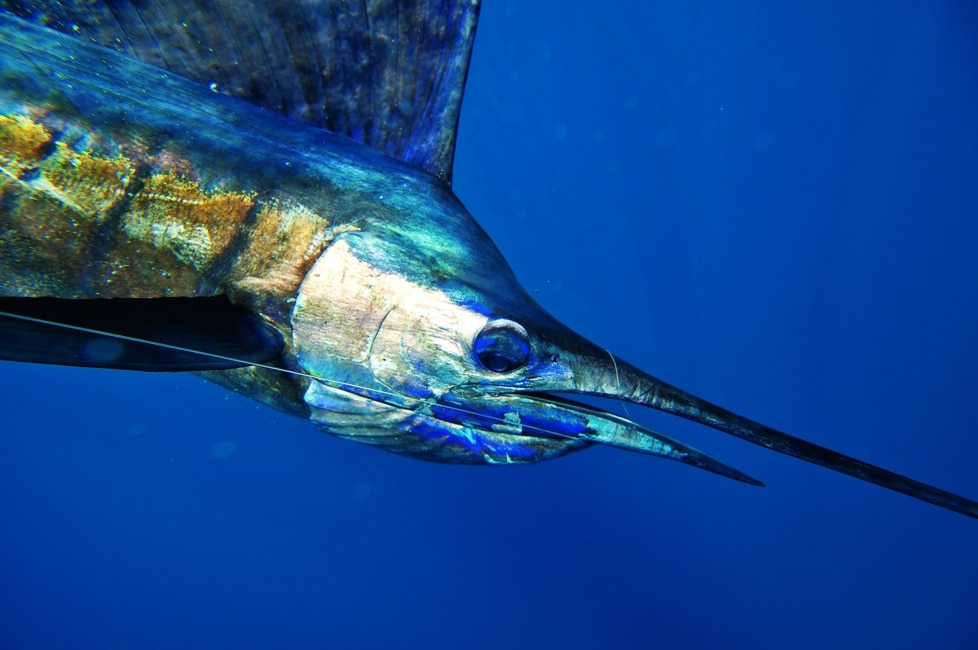
Question: I came across a stunning revelation in the photos of billfishes. The similarity between all those images of live billfish lay in the eyes. Every sailfish or marlin had its eyes looking down. I realized that the majority of pictures of such fish I had seen elsewhere had the same issue: The billfish looked sad or ashamed to be captured, and thus didn’t smile for their photos. I’ve found the same drooped eyes on the marlin and sailfish that I have captured as well, and am wondering about the cause for this. I know fish have no eyelids, so perhaps this could be a response to the bright light of day? — Matt Allen, Tilloo Cay, Bahamas
Probably no scientist on Earth has spent more time observing billfish underwater than Guy Harvey, so we put this one to Guy, and here’s his response. — Ed.
Answer: Eye have an answer for you! Billfish roll their eyes back and down particularly when hooked or while jumping. This is to protect the eyeball from the irritation caused by hook or leader. One thing I have not seen is the eye rolled upward. Eyeballs are a bony cup with one open side for the iris and pupil. The eyes of billfish are much more mobile in the socket than among other pelagics such as tunas, mackerels, jacks, etc. When swimming normally, a billfish’s eye looks straight out or is angled slightly down, as far as my photos and observations go. When you look at a billfish head from above, you cannot see the pupil; when you look at a billfish from directly below, you can see the pupil. Hope this helps. Tight lines! — Guy Harvey
A Fish with Hands and Arms

Question: During a recent fishing trip off the coast of North Carolina, we caught this interesting-looking fish. It was hooked while we bottomfished in about 70 feet of water. The pectoral fins were very much like a hand and arm, and the pelvic fins looked like feet. I’ve never seen anything like it, but believe it’s a type of frogfish. Can you tell me the exact species and a little bit about it?
— Josh Humphrey, Swansboro, North Carolina
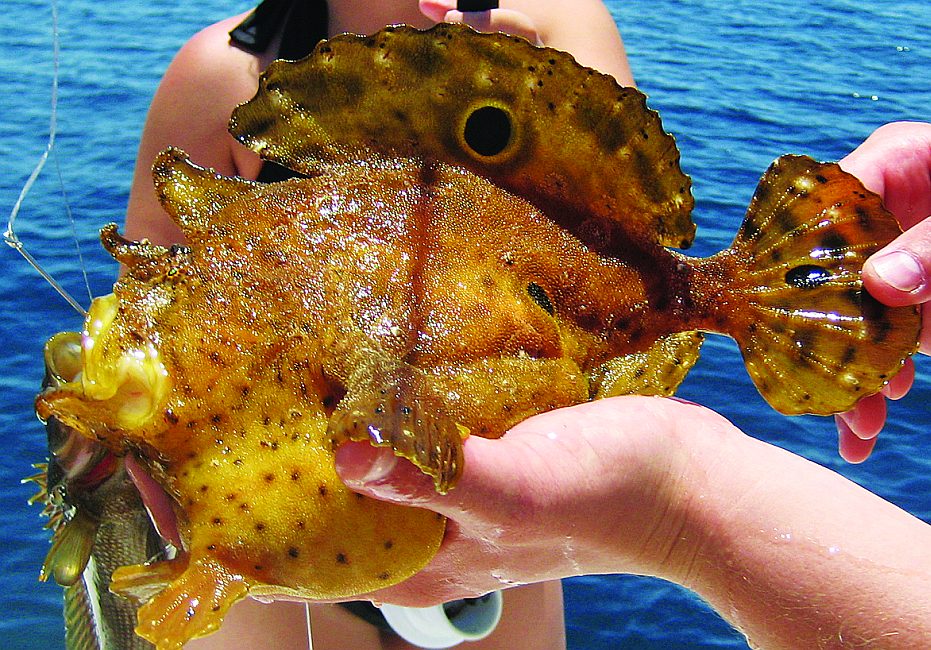
Answer: You caught an ocellated frogfish, Antennarius ocellatus, Josh, and a fairly large one. This member of the frogfish family, Antennariidae, differs from other frogfishes inhabiting the Atlantic Coast of North America by a number of characteristics, particularly its size: It can reach a length of more than 15 inches, while no other frogfish in the area grows larger than 8 inches. The three ocelli or eyespots on each side, from which the fish derives its common name, are also diagnostic. This species is known to range from North Carolina to Venezuela, including the Gulf of Mexico; it’s also known from the Eastern Atlantic. — Ray Waldner
A Tuna Parasite in Fiji

Question: Bula, experts! While fishing here in Fiji, we came across a massive school of yellowfin tuna. We boated a few fish and got back to the beach to fillet our catch, and found that one of the tuna had these odd white bumps throughout the entire fish. As my knife went through the fillet, it would slice through some of these white bumps and would create slime on the knife. I’ve never seen anything like this before, nor has anyone here. Limited information on the Internet. We did not eat this fish. Can you help us with the mystery? — Fiji Pete, Fiji
Answer: Although I can’t be sure without examining some of that white stuff under a microscope, I think you have a fish infected with a protozoan parasite called kudoa. There are a number of species, many of which infect fish muscle. These form those white, pus-filled sacs you quickly noticed. Each sac contains very high numbers of microscopic organisms that produce an enzyme that dissolves the surrounding muscle. A live fish can more or less cope with these parasites; however, after the host dies, the parasites continue to live for a short time, busily dissolving muscle tissue, thus creating a hole where a white sac used to be.
These hole-ridden fish are unsalable and can form a considerable problem for fish distributors. Are these parasites dangerous to humans? Well, if you cook the fish, the parasites are dead and just more protein. And, until recently, it was thought that consuming kudoa from uncooked fishes was also harmless. However, a kudoa causing intestinal issues from flounder eaten raw was recently reported from Japan, so you never know. — Milton Love
Flounder Mystery in Hawaii

Question: I have been fishing in Hawaii for more than 30 years, and until this past weekend, I have never caught or seen this fish. I think it’s a peacock or flowery flounder, but I didn’t know we had flounders in Hawaii. I caught three in one day, on flies, while stalking bonefish on flats near Joint Base Pearl Harbor/Hickam. All three were between 5 and 8 inches in length. Could you please verify the species and how common they are in Hawaii? Also, how big can these get? — Mike Hogan, Aiea, Hawaii
Answer: Mike, you’re correct in your identification of this pretty little flatfish as a flowery (or peacock) flounder (Bothus mancus). This species is a member of the left-eyed flounders (family Bothidae), which means that both of their eyes are found on the left side of the body in juvenile and adult fish. Flowery flounder were originally described from Tahiti but occur throughout the tropical and subtropical coral reefs of the Indo-Pacific region, including the Hawaiian Islands. They are relatively common throughout their range and frequent coral-reef flats as well as sandy or rubble reef edges down to at least 400 feet.
Flowery flounder are not a large flatfish, growing to a maximum reported length of only around 19 inches, but they are supposedly very tasty to eat. Like other flounders, they’re a master of camouflage, able to change their color within seconds to match their background. They also commonly bury themselves in the sand, completely covered except for their eyes. Thus camouflaged, they lie in wait for passing prey — mainly small fish, crabs and shrimp — to pass by. Once they’re within range, the flounder launches a lightning-fast strike to capture its unsuspecting prey, which is why these flatfish were vulnerable to your bonefish presentations. — Ben Diggles



